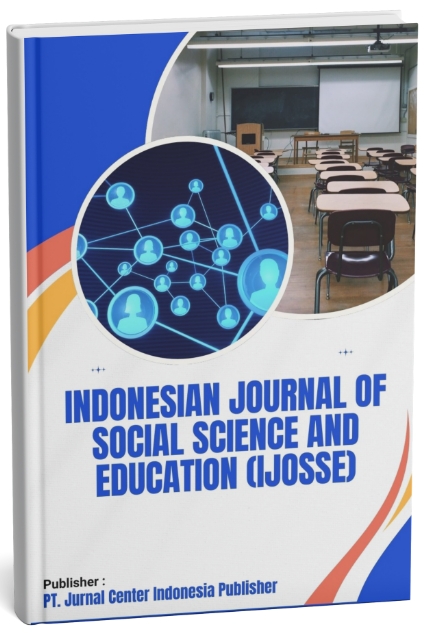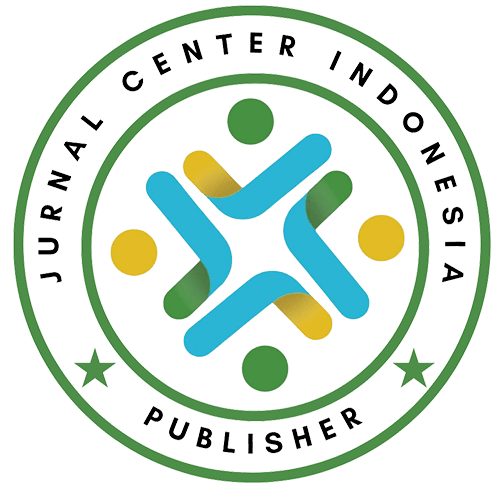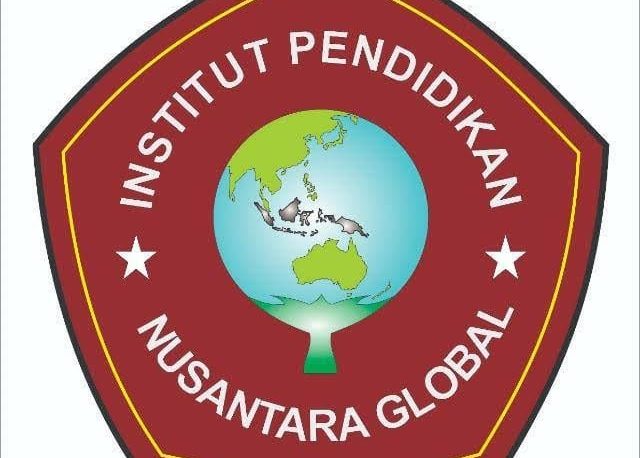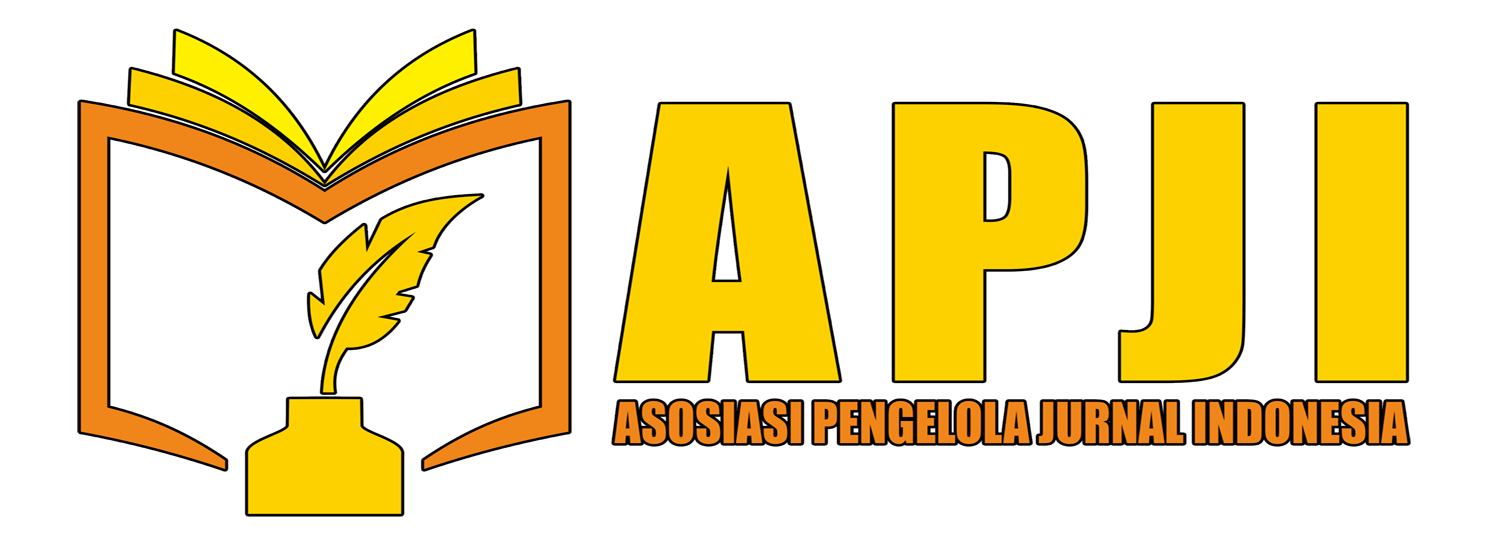PEMASARAN INFLUENCER DAN IDENTITAS DIGITAL: EKSPLORASI ANTROPOLOGIS BUDAYA KONSUMEN ONLINE
DOI:
https://doi.org/10.62567/ijosse.v1i3.1204Keywords:
urban rhythm, temporal ethnography, marginal mobility, spatial production, Global SouthAbstract
This study explores how influencer marketing shapes digital identity and spatial relations in Makassar, Indonesia, through a spatially grounded urban ethnography approach. This framework enables a deep reading of how urban residents engage with digital practices to navigate symbolic and spatial exclusion generated by influencer content. Through social media observation, narrative interviews, and the tracing of urban locations featured in visual representation, the study finds that influencer marketing does not merely sell products—it also reproduces social hierarchies through aesthetic spatiality and the logic of visibility.
Yet, amid such exclusions, marginalized communities deploy diverse tactics of resistance, including visual reengineering, the use of alternative locations, and digital irony that disrupt dominant narratives. These findings suggest that digital identity is not passively consumed but actively negotiated through concrete and often unexpected spatial relations. Drawing on Lefebvre’s theory of the production of space, Urry’s concept of digital mobilities, and Gandy’s politics of infrastructure, the study shows how cities and digital spaces co-constitute a contested symbolic terrain.
The article’s main contribution lies in advancing a Global South perspective, where digital technologies and aesthetics are practiced contextually and do not always conform to the logics of global capitalism. This research underscores that urban—and digital—space is not solely produced from above, but also from below, through the everyday agency of ordinary citizens.
Downloads
References
Arriagada, A., & Bishop, S. (2021). Between Commerciality and Authenticity: The Imaginary of Social Media Influencers in the Platform Economy. Communication, Culture and Critique, 14(4), 568–586. https://doi.org/10.1093/ccc/tcab050
Campbell, C., & Farrell, J. R. (2020). More than meets the eye: The functional components underlying influencer marketing. Business Horizons, 63(4), 469–479. https://doi.org/10.1016/j.bushor.2020.03.003
Charitsis, V., Laamanen, M., & Lehtiniemi, T. (2025). Towards Algorithmic Luddism: class politics in data capitalism. Information, Communication & Society, 28(6), 971–988. https://doi.org/10.1080/1369118X.2024.2435996
Charlesworth, A. (2014). Digital Marketing. Routledge. https://doi.org/10.4324/9780203493717
Chen, Y., Ni, L., & Ospina-Forero, L. (2021). Visualising internal migration flows across local authorities in England and Wales. Environment and Planning A: Economy and Space, 53(4), 616–618. https://doi.org/10.1177/0308518X20968568
Colleoni, M. (2013). Mobility, Accessibility and Social Equity: A Comparative and Interdisciplinary Empirical Study in the Metropolitan Areas of Milan, Bologna and Turin. In Space–Time Design of the Public City (pp. 137–156). Springer Netherlands. https://doi.org/10.1007/978-94-007-6425-5_10
De Castro, M., Zona, U., & Bocci, F. (2022). Cultures, Intersections, Networks. The Role of Algorithms in Defining Power Relations Based on Gender, Race, Class, Disability (pp. 42–58). https://doi.org/10.1007/978-3-031-20777-8_4
de Certeau, M. (1984). The Practice of Everyday Life (S. Rendall (Trans.)). University of California Press.
Delbaere, M., Michael, B., & Phillips, B. J. (2021). Social media influencers: A route to brand engagement for their followers. Psychology & Marketing, 38(1), 101–112. https://doi.org/10.1002/mar.21419
Drenten, J. (2025). Influencer Marketing: How to Be Successful in the Age of Chronically Online Consumers. NIM Marketing Intelligence Review, 17(1), 10–17. https://doi.org/10.2478/nimmir-2025-0002
Faisal, A., & Hasyim, M. (2022). Warkop (Coffeehouse) and the Construction of Public Space in Makassar City. International Journal of Professional Business Review, 7(5), e0706. https://doi.org/10.26668/businessreview/2022.v7i5.706
Farliana, N., Murniawaty, I., & Hardianto, H. (2024). Sustainability of the Digital Economy in Indonesia: Opportunities, Challenges and Future Development. Review of Business and Economics Studies, 11(4), 21–28. https://doi.org/10.26794/2308-944X-2023-11-4-21-28
FARRELL-MOLLOY, J., & LEIDIG, E. (2025). “Heil Sol Brah”: Community-building practices around far-right masculinist influencers. Nordic Journal of Media Studies, 7(1), 150–170. https://doi.org/10.2478/njms-2025-0009
Félix Seras, D. (2022). #Instagrameable. Prácticas y rutinas de un grupo de fans de las social media influencers Katy Esquivel y Tana Rendón y la construcción de su capital cultural y narrativas femeninas. Desde El Sur, 14(2), e0019. https://doi.org/10.21142/DES-1401-2022-0019
GANDY, M. (2005). Cyborg Urbanization: Complexity and Monstrosity in the Contemporary City. International Journal of Urban and Regional Research, 29(1), 26–49. https://doi.org/10.1111/j.1468-2427.2005.00568.x
Garg, Y., & Gopal, K. (2024). Using Influencer Marketing to Strengthen Brand Evangelism (pp. 103–132). https://doi.org/10.4018/979-8-3693-7773-4.ch005
Güngör, A. S., & Çadırcı, T. O. (2023). Bridging the Theory and Practice of Digital Marketing from Interactive Marketing Perspective: A Historical Review. In The Palgrave Handbook of Interactive Marketing (pp. 65–92). Springer International Publishing. https://doi.org/10.1007/978-3-031-14961-0_4
Heřmanová, M. (2022). ‘I’m Always Telling You My Honest Opinion’: Influencers and Gendered Authenticity Strategies on Instagram. In Cultures of Authenticity (pp. 231–245). Emerald Publishing Limited. https://doi.org/10.1108/978-1-80117-936-220221017
Nuseir, M. T., El Refae, G. A., Aljumah, A., Alshurideh, M., Urabi, S., & Kurdi, B. Al. (2023). Digital Marketing Strategies and the Impact on Customer Experience: A Systematic Review (pp. 21–44). https://doi.org/10.1007/978-3-031-12382-5_2
Oprea, M.-G., Vlădescu, M.-I., & Mihalache, R.-P. (2023). Urban Village: A Trend Accentuated by the COVID-19 Pandemic – Analysis of the Bucharest-Ilfov Region (pp. 263–273). https://doi.org/10.1007/978-3-031-30996-0_19
Pratomo, R. A., Samsura, D. A. A., & Islamiah, Z. (2023). Jam Tomorrow. In Geospatial Science for Smart Land Management (pp. 398–417). CRC Press. https://doi.org/10.1201/9781003349518-29
Rosário, A. T., Lopes, P. R., & Rosário, F. S. (2023). Influencer Marketing in the Digital Ecosystem (pp. 132–166). https://doi.org/10.4018/978-1-6684-8898-0.ch009
Rutanen, N. (2017). Spatial Perspective on Everyday Transitions Within a Toddler Group Care Setting (pp. 49–62). https://doi.org/10.1007/978-981-10-3197-7_4
Said, M. M., & Soi, A. B. (2025). Expanding SME Product Export Market Through Digital Innovation in Indonesia (pp. 253–270). https://doi.org/10.4018/979-8-3693-3936-7.ch012
Savastano, M., Suciu, M.-C., Gorelova, I., & Stativă, G.-A. (2023). How smart is mobility in smart cities? An analysis of citizens’ value perceptions through ICT applications. Cities, 132, 104071. https://doi.org/10.1016/j.cities.2022.104071
Scott, J. C. (1985). Weapons of the Weak: Everyday Forms of Peasant Resistance. Yale University Press.
Skott-Myhre, H. (2024). Serious Play: Youth and the Deployment of Culturally Subversive Sign Within Postmodern Capitalism. In Handbook of Children and Youth Studies (pp. 801–813). Springer Nature Singapore. https://doi.org/10.1007/978-981-99-8606-4_33
Smith, M., & Richards, G. (Eds.). (2013). The Routledge Handbook of Cultural Tourism. Routledge. https://doi.org/10.4324/9780203120958
Surya, B., Salim, A., Hernita, H., Suriani, S., & Abubakar, H. (2023). Environmental Quality Deterioration in the Mamminasata Metropolitan New City Area, South Sulawesi, Indonesia. International Journal on Advanced Science, Engineering and Information Technology, 13(4), 1258–1268. https://doi.org/10.18517/ijaseit.13.4.16974
THOMPSON, E. C. (2009). Mobile phones, communities and social networks among foreign workers in Singapore. Global Networks, 9(3), 359–380. https://doi.org/10.1111/j.1471-0374.2009.00258.x
Urry, J. (2007). Mobilities. Polity Press.
Vagni, T. (2024). A Matter of Style: Community Building between Seduction and Indirect Communication. Social Sciences, 13(7), 357. https://doi.org/10.3390/socsci13070357
van der Nagel, E. (2018). ‘Networks that work too well’: intervening in algorithmic connections. Media International Australia, 168(1), 81–92. https://doi.org/10.1177/1329878X18783002
van Driel, L., & Dumitrica, D. (2021). Selling brands while staying “Authentic”: The professionalization of Instagram influencers. Convergence: The International Journal of Research into New Media Technologies, 27(1), 66–84. https://doi.org/10.1177/1354856520902136
van Eldik, A. K., Kneer, J., Lutkenhaus, R. O., & Jansz, J. (2019). Urban Influencers: An Analysis of Urban Identity in YouTube Content of Local Social Media Influencers in a Super-Diverse City. Frontiers in Psychology, 10. https://doi.org/10.3389/fpsyg.2019.02876
Vear, A. M., & Rosenbaum, J. E. (2024). Identity for Sale: Authenticity, Commodification, and Agency in YouTube Influencers. Information & Culture, 59(3), 285–308. https://doi.org/10.7560/IC59304
Vidal, J. (2025). Productive power in social networks: challenges for post-phenomenological mediation theory. AI & SOCIETY. https://doi.org/10.1007/s00146-025-02248-3
Ybema, S., & Horvers, M. (2017). Resistance Through Compliance: The Strategic and Subversive Potential of Frontstage and Backstage Resistance. Organization Studies, 38(9), 1233–1251. https://doi.org/10.1177/0170840617709305
Zaid, B., Fedtke, J., Shin, D. D., El Kadoussi, A., & Ibahrine, M. (2022). Digital Islam and Muslim Millennials: How Social Media Influencers Reimagine Religious Authority and Islamic Practices. Religions, 13(4), 335. https://doi.org/10.3390/rel13040335
Zaman, K., Nawaz Khan, S., Abbas, M., & AbdAlatti, A. (2024). Effect of social media influencers on brand preferences through trust: Moderating role of emotional attachment. Innovative Marketing, 20(2), 128–139. https://doi.org/10.21511/im.20(2).2024.11
Downloads
Published
How to Cite
Issue
Section
License
Copyright (c) 2025 Djufri Djufri

This work is licensed under a Creative Commons Attribution-ShareAlike 4.0 International License.
















